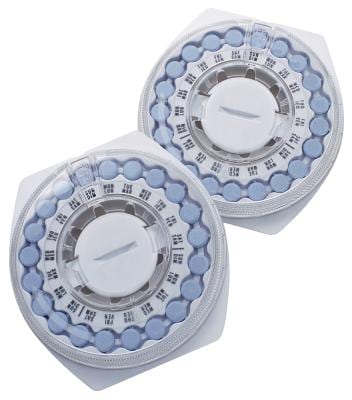Ever since the FDA approved the first birth control pill in 1960, it’s remained a popular form of contraception for women. Barring more invasive and permanent methods of birth control, such as insertion of an intrauterine device (IUD) or sterilization, the pill is effective in preventing pregnancy — but only if you use it correctly.
About Oral Contraceptives
There are two types of birth control pills: the combination pill, which contains estrogen and progestin, and the “minipill,” which contains only progestin. According to the American Congress of Obstetricians and Gynecologists, or ACOG, the minipill is more suitable for women who are still nursing, have blood clots or experience pronounced side effects taking combination birth control pills. Estrogen and progestin are hormones that prevent ovulation. Combination birth control pills are prescribed in packs of 21, 28 and 91, also known as continuous dosing. Using the 91-day pack reduces the number of menstrual periods you have to only four each year.
Effectiveness
According to Planned Parenthood, between 2 and 8 pregnancies occur for each 100 women who take the birth control pill. The only more effective ways to prevent pregnancy are for you to get surgically sterilized, your partner to have a vasectomy, or by using an IUD or a birth control implant; with each of these methods the risk for pregnancy is 1 out of every 100 women using them.
Pregnancy Risk
According to the ACOG, the 8 percent figure for pregnancy occurrence for women taking the pill as cited by Planned Parenthood is largely due to “user error.” You can get pregnant while taking the pill if you skip a dose — or several doses. Alternately, sometimes pregnancy occurs because you take the pill and it doesn’t get absorbed into your body, for example, if you’re vomiting. During these times, it’s essential to use back-up contraception such as a condom, diaphragm, cervical cap or contraceptive sponge. If you skip the pill and don’t use another form of birth control, you can take the “morning-after pill” within five days of having unprotected sex to prevent pregnancy. You can purchase emergency contraception at most drugstores and pharmacies without a prescription.
Getting Pregnant
If you’re on the pill and want to get pregnant, it’s possible, but not likely, that this will happen during your first ovulation cycle once you stop taking it. If you wait until you have your period after going off the pill, this makes it easier to determine when you’ll ovulate and conceive. A higher risk of miscarriage was once associated with pregnancies that occurred right after women went off the pill; however, these concerns are without basis, according to MayoClinic.com.
Oral Contraceptive Safety
According to the AOCG, nursing women, those aged 35 years and older who smoke, and women with health complications such as blood clots, shouldn’t take combination pills. Additionally, even the minipill isn’t suitable for women with a history of breast cancer or heavy, irregular periods, as well as those with liver disease. Other options are available if you’re not a good candidate for a hormonal method of birth control such as the pill. Talk to your treating gynecologist to see which method is best for you.





